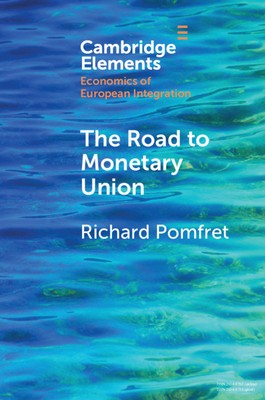
- We will send in 10–14 business days.
- Author: Richard Pomfret
- Publisher: Cambridge University Press
- ISBN-10: 1108965474
- ISBN-13: 9781108965477
- Format: 15.2 x 22.9 x 0.3 cm, softcover
- Language: English
- SAVE -10% with code: EXTRA
Reviews
Description
The Road to Monetary Union analyses in non-technical language the process leading to adoption of a common currency for the European Union. The monetary union process involved different issues at different times and the contemporary global background mattered. The Element explains why monetary union was attempted and failed in the 1970s, and why the process was restarted in 1979, accelerated after 1992 and completed for a core group of EU members in 1999. It analyzes connections between eurozone membership and Greece's sovereign debt crisis. It concludes with analysis of how the eurozone works today and with discussion of its prospects for the 2020s. The approach is primarily economic, while acknowledging the role of politics (timing) and history (path dependence). A theme is to challenge simplistic ideas (e.g. that the euro has failed) with fuller analysis of competing pressures to shape the nature of monetary union.
EXTRA 10 % discount with code: EXTRA
The promotion ends in 20d.00:13:39
The discount code is valid when purchasing from 10 €. Discounts do not stack.
- Author: Richard Pomfret
- Publisher: Cambridge University Press
- ISBN-10: 1108965474
- ISBN-13: 9781108965477
- Format: 15.2 x 22.9 x 0.3 cm, softcover
- Language: English English
The Road to Monetary Union analyses in non-technical language the process leading to adoption of a common currency for the European Union. The monetary union process involved different issues at different times and the contemporary global background mattered. The Element explains why monetary union was attempted and failed in the 1970s, and why the process was restarted in 1979, accelerated after 1992 and completed for a core group of EU members in 1999. It analyzes connections between eurozone membership and Greece's sovereign debt crisis. It concludes with analysis of how the eurozone works today and with discussion of its prospects for the 2020s. The approach is primarily economic, while acknowledging the role of politics (timing) and history (path dependence). A theme is to challenge simplistic ideas (e.g. that the euro has failed) with fuller analysis of competing pressures to shape the nature of monetary union.


Reviews